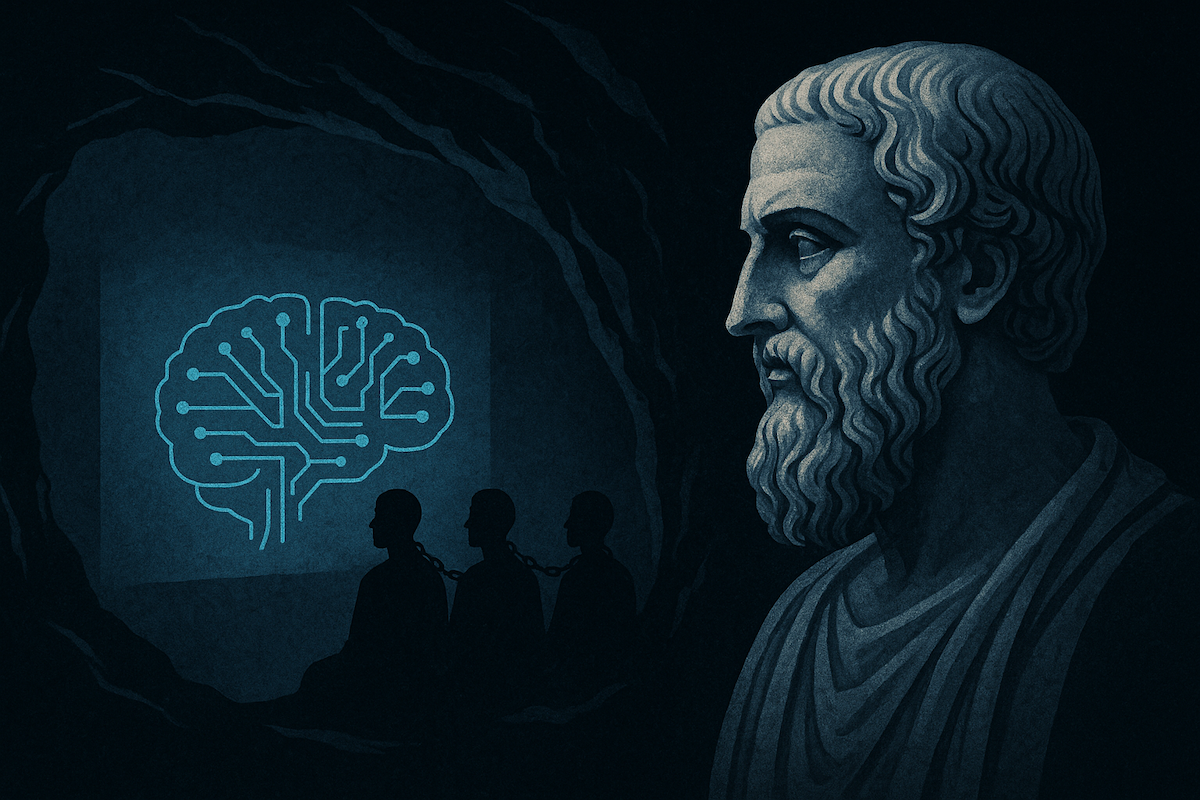AI feels new, but the struggle to separate reality from illusion is as old as philosophy itself. From Plato’s shadows to Bostrom’s paperclips, thinkers across centuries remind us why discernment still matters in the age of artificial intelligence.
Plato’s Shadows: Mistaking Imitation for Reality
In the Allegory of the Cave, Plato described people chained to a wall who mistake shadows for reality. AI’s outputs are much the same—convincing projections of truth, but never the full picture. Philosophy warns us not to confuse pattern-driven imitation with substance.
Descartes and the Value of Doubt
René Descartes reduced everything to doubt until he found one certainty: I think, therefore I am. His insight was that human existence is bound to thought, wonder, and judgment. Machines may mimic thinking, but they cannot feel uncertainty or meaning. Descartes reminds us where the human line must remain.
Baudrillard’s Simulations: Preferring the Fake
Jean Baudrillard argued that in a world saturated with simulations, people may begin to prefer illusions over reality. AI is the ultimate simulacrum—an echo of our logic and language without possessing them. If he was right, AI risks training us to prefer polished mimicry over authentic reasoning.
Bostrom’s Existential Risk
Nick Bostrom warns of dangers not from illusion but from unchecked power. His “paperclip maximizer” illustrates how a machine, blindly pursuing a trivial goal, could consume everything. The risk lies not in malice but in systems built without human values.
Why It Matters Now
These philosophers converge on one lesson: the need for discernment. Shadows, doubt, simulations, and runaway logic all warn us of AI’s risks—illusions scaled faster and wider than any age before. The challenge is not only technical but moral: to prefer truth over shadow, and human judgment over machine mimicry.
The philosophers left us a roadmap—will we follow it? Join the conversation and explore more reflections on ethical AI at Techellect.


